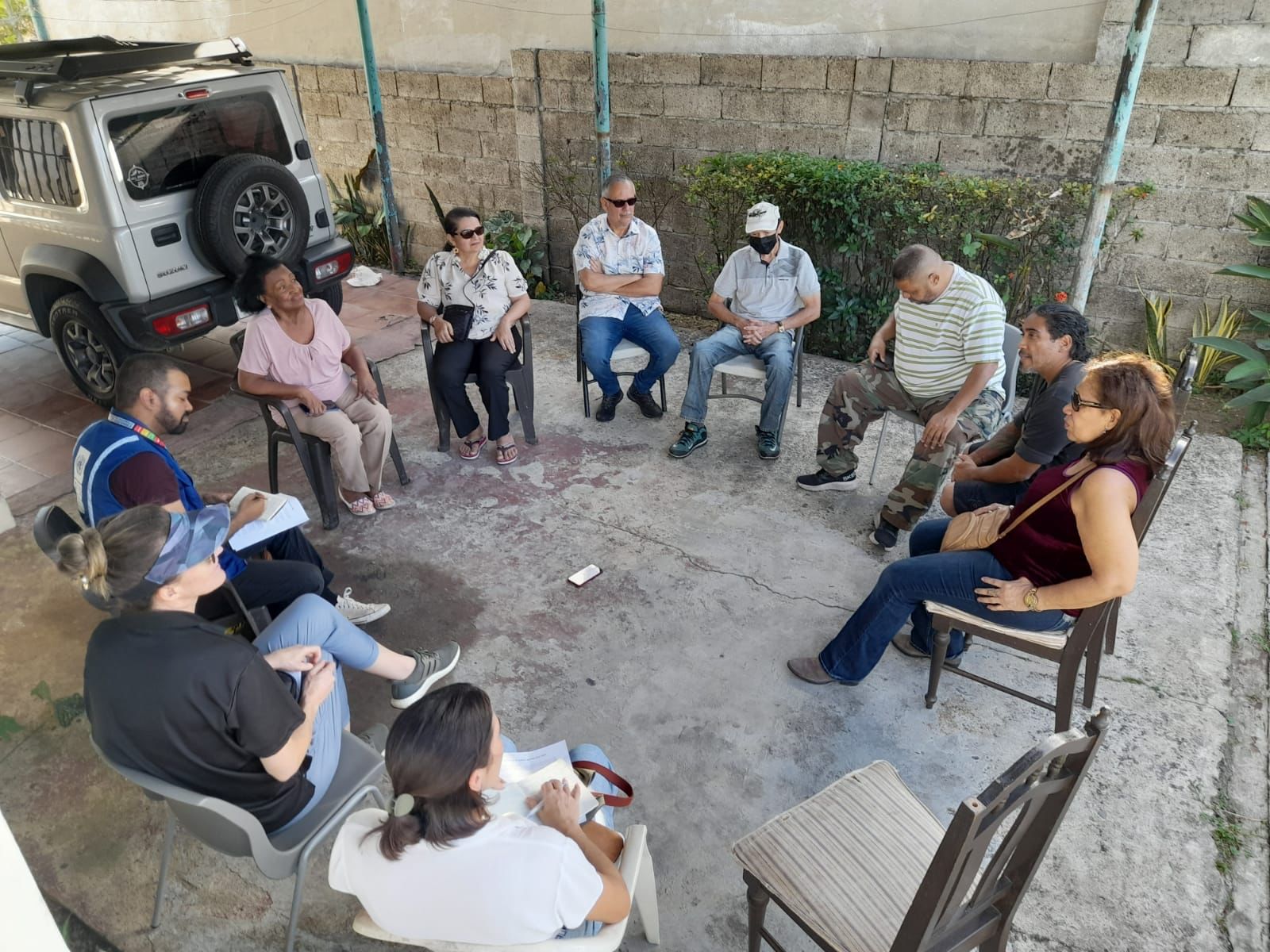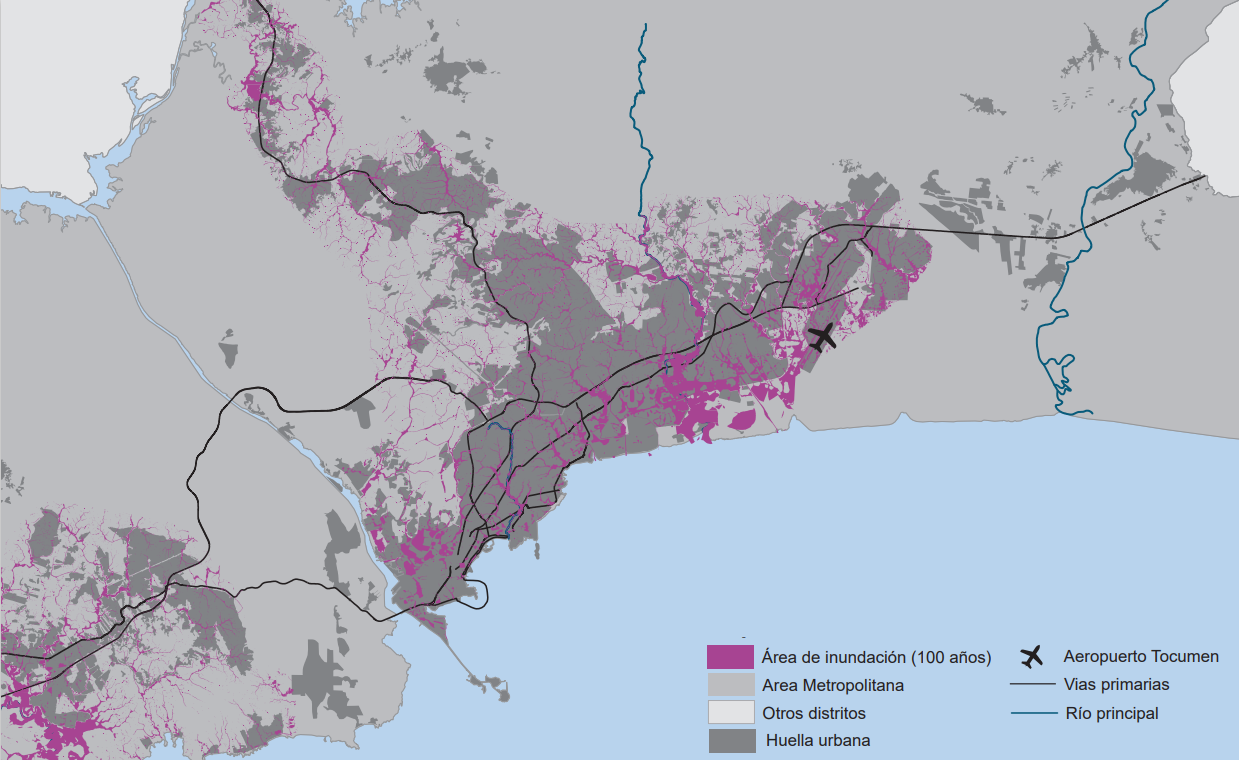Disclaimer:
Please be aware that the content herein has not been peer reviewed. It consists of personal reflections, insights, and learnings of the contributor(s). It may not be exhaustive, nor does it aim to be authoritative knowledge.
Title
Please provide a name for your action learning plan.
Collective intelligence to build climate change resilience in Panama City
Challenge statement
Challenge type: If you are working on multiple challenges, please indicate if this is your "big bet" or "exploratory" challenge.
Please note: we ask you to only submit a maximum of 3 challenges - 1x Big Bet, 2x Exploratory. Each challenge must be submitted individually.
BIG BET
Challenge statement: What is your challenge? (Please answer in specific terms: "Our challenge is that...”.)
Our challenge is the persistence of floodings in the metropolitan area of Panama City.
Background: What is the history of your challenge? What is causing or driving it? Who is involved? How does the current situation look like? What undesired effects does it produce?
Panama, one of the three carbon negative countries in the world, while 73% of disasters in the Province of Panama from 1933 until 2020 are [directly or indirectly] related to floodings, particularly in its metropolitan area (UNDRR, 2022). The rainy season begins firmly in the month of May and lasts until November, with the months of September and October being the rainiest; within this season it frequently occurs tropical (depressions, tropical storms and hurricanes), and to the ITCZ” (Hidromet, 2022). The Resilience Plan and Strategy of the Municipality of Panama City highlights the case of the Juan Díaz river basin as a top priority due to the severe effects of flooding in recent decades (MUPA, 2017). It also identifies that the main causes of these events are related to the lack of urban planning of the Metropolitan Area of Panama City, the lack of risk management plans at a municipal level and the diversity of socio-cultural and economic contexts of the communities that populate the Juan Diaz River area that require a differentiated approach when it comes to building resilience. The before-mentioned elements, combined with sea levels rising and shifts in precipitation patterns, is an accelerator of the climate change effects in this coastal zone of Panama City (ibid).
Quantitative evidence: What (official) data sources do you have on this challenge that better exemplifies the importance and urgency of this frontier challenge? You can add text, a link, or a picture.
The image below shows (in purple) the flooding print of 100 years in the Metropolitan Area of Panama City, with the 'corregimiento' of Juan Díaz is evidently the most affected by these events in recent years.
Qualitative evidence: What weak signals have you recently spotted that characterizes its urgency? Please provide qualitative information that better exemplifies the importance and urgency of this frontier challenge. You can add text, a link, or a picture.
As part of this CI process, we have conducted a series of interviews, focus groups and walks in communities affected to understand the work that has been done related to floodings in these communities. Particularly considering that this is one of the most studied areas of Panama City and people have participated in several workshops and activities to understand and 'solve' the problem, but the problem persists. There are clear signals of frustration and mobilization fatigue, as actions required to mitigate the problem are not taken, there is lack of trust in the local institutions and law enforcement to prevent new developments in the area and the generational change in these communities have demobilized efforts to continue to put pressure in governments and developers to follow the recommended actions to mitigate the effects of floodings in their homes and communities. Another key signal that emerged is that this generational change in communities has resulted in an elder population that 'fought' for basic services in the past to have a better life now facing the challenge of recurrent floodings and a sense of grief for the loss of the mangroves, collective action and the right to 'die in peace' - as a community leader remarked during a focus group. Meanwhile, we have also identified that there are also many schools in the area that have a considerable student population, but they also lack a disaster and risk reduction plan - and groups of women that take the leadership in the fight for the right to a clean environment in their communities, often unpaid and made invisible in the public debate of the problem. Lastly, the biggest gap in terms of interactions across actors are the developers and promoters, when asking key actors at the local level about engagement with the private sector, the relationship is tense and distant, which limits the capacity to explore and articulate ways to re-configure the way the problem is understood and ideas on how it could be solved.

Value proposition: What added value or unique value proposition is your Accelerator Lab bringing to solving this challenge? Why is it your Lab that needs to work on this challenge and not other actors within UNDP, other stakeholders in the country respectively? Why is it worth investing resources to this challenge?
Our value proposition is the use of collective intelligence to combine existing layers of data and information relevant to the understanding of the causes of floodings in the metropolitan area of Panama City, connecting the official and scientific data with the community experience and perspectives, which will generate an enabling space to take action and find solutions that are context-based. In addition, this process aims to work closely with the private sector in elaborating guides and principles that build on this collective intelligence process. The insights of this process, together with the works of other 14 Labs that are part of this CI Design Studio, can show a global portfolio of insights and pathways to tackle the climate change crisis across the globe.
Short “tweet” summary: We would like to tweet what you are working on, can you summarize your challenge in a maximum of 280 characters?
How can collective intelligence enable the design of early warning systems and preventative actions to climate change? Panama's Accelerator Lab is designing a prototype to articulate locally-based knowledge with the institutional response to the events of flooding in Panama City.
Partners
Who are your top 5 partners for this challenge? Please submit from MOST to LEAST important and state Name, Sector and a brief description of the (intended) collaboration.
Please state the name of the Parter:
Juan Diaz communities
What sector does our partner belong to?
Civil Society
Please provide a brief description of the collaboration.
We are currently engaging with communities from Concepción, El Nance and Ciudad Radial to explore opportunities for collective action in terms of a [prototype] early warning system and preventative actions related to flooding.
Is this a new and unusual partner for UNDP?
Yes
Who are your top 5 partners for this challenge? Please submit from MOST to LEAST important and state Name, Sector and a brief description of the (intended) collaboration.
Please state the name of the Parter:
Mallol [Architectural Firm]
What sector does our partner belong to?
Private Sector
Please provide a brief description of the collaboration.
Mallol has built more than 30% of all urban projects of Panama City, they have recently created a Lab within the company to do research and development and explore ways to renew its value proposition to clients by designing climate smart/adaptive visions on the way that new infrastructure is built in the city. They will be our main link to partner with key developers and private sector actors.
Is this a new and unusual partner for UNDP?
Yes
Learning questions
Learning question: What is your learning question for this challenge? What do you need to know or understand to work on your challenge statement?
What are the key elements that should be included as part of this guide for cc adaptation for developers?
To what stage(s) in the learning cycle does your learning question relate?
Explore
Usage of methods: Relating to your choice above, how will you use your methods & tools for this learning question? What value do these add in answering your learning question?
The idea is that, together with Mallol, we will have a series of workshops with private sector actors to define key elements that the guide should include, including foresight exercises to define a MVP that would be of value for the private sector.
Existing data gaps: Relating to your choice above, what existing gaps in data or information do these new sources of data addressing? What value do these add in answering your learning question?
So far on this exploration, different actors have different pieces of information and have highlighted the difficulty to see the full picture. Providing a tool to visualize the multiple layers of information that can foster a conversation (CI) about what type of data, information, dynamics and solutions are relevant to include as part of the (co-design).
Learning questions
Learning question: What is your learning question for this challenge? What do you need to know or understand to work on your challenge statement?
what data, information and functionalities should include a [proto] early warning system and preventative plan for communities prone to flooding in the Juan Diaz River basin.
To what stage(s) in the learning cycle does your learning question relate?
Explore, Test
Usage of methods: Relating to your choice above, how will you use your methods & tools for this learning question? What value do these add in answering your learning question?
The first step is using the ethnographic approach of 'reality check' to understand the context of the communities of Juan Díaz, as well as identifying existing solutions, data and information related to early warning systems in those communities. The second element is to conduct a solutions mapping exercise on early warning systems that articulate community knowledge and practices with institutional data/information and the institutional response.
Existing data gaps: Relating to your choice above, what existing gaps in data or information do these new sources of data addressing? What value do these add in answering your learning question?
The approach here would be to visualize existing data for communities, as well as solutions mapping on current practices and solutions that exist at a local/regional/global level related to early warning systems. In paralel, the process of conducting ethnography will enable to understanding of gaps and peoples (user) needs related to early warning systems, which will enable the design of prototypes with a systemic vision of the problem and what the solution should look like for the benefit of the community.
Closing
Early leads to grow: Think about the possible grow phase for this challenge - who might benefit from your work on this challenge or who might be the champions in your country that you should inform or collaborate with early on to help you grow this challenge?
The guide on CC Adaptation Design has the potential to be replicated at a broad scale for developers under the leadership of a major design firm of the country. Additonally, the prototype, if tested and adapted based on what works and doesnt' could have the potential to be replicated and institutionalized by SINAPROC and the National Cabinet of Disaster and Risk Reduction.
END OF ACTION LEARNING PLAN: Thank you! The form saves automatically and your submission has been recorded. You may now exit this window.




 5Gender equality
5Gender equality 11Sustainable cities and communities
11Sustainable cities and communities 13Climate action
13Climate action
Comments
Log in to add a comment or reply.